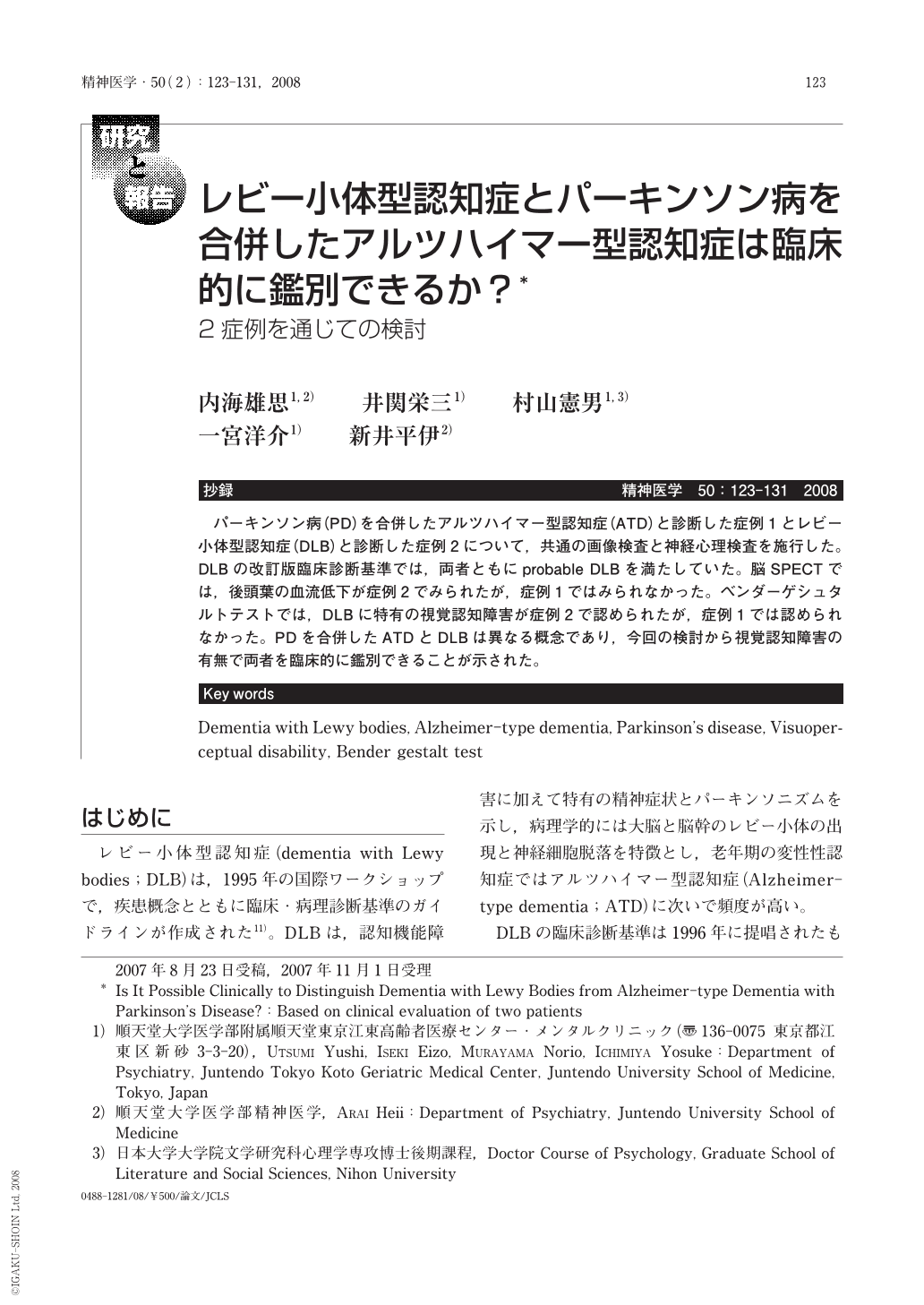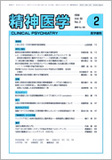Japanese
English
- 有料閲覧
- Abstract 文献概要
- 1ページ目 Look Inside
- 参考文献 Reference
- サイト内被引用 Cited by
抄録
パーキンソン病(PD)を合併したアルツハイマー型認知症(ATD)と診断した症例1とレビー小体型認知症(DLB)と診断した症例2について,共通の画像検査と神経心理検査を施行した。DLBの改訂版臨床診断基準では,両者ともにprobable DLBを満たしていた。脳SPECTでは,後頭葉の血流低下が症例2でみられたが,症例1ではみられなかった。ベンダーゲシュタルトテストでは,DLBに特有の視覚認知障害が症例2で認められたが,症例1では認められなかった。PDを合併したATDとDLBは異なる概念であり,今回の検討から視覚認知障害の有無で両者を臨床的に鑑別できることが示された。
For two patients showing mild dementia, we carried out neuropsychological tests such as MMSE, WAIS-III, WMS-R and Bender gestalt test (BGT) as well as radiological examinations such as MRI, SPECT and MIBG scintigraphy. Both patients met the criteria for the clinical diagnosis of probable dementia with Lewy bodies (DLB), because case 1 revealed a core feature, parkinsonism, and a suggestive feature, REM sleep behavior disorder, in addition to a central feature, progressive cognitive decline, while case 2 revealed three core features, fluctuating cognition, visual hallucinations and parkinsonism, and two suggestive features, REM sleep behavior disorder and neuroleptic sensitivity, in addition to a central feature. However, case 1 also met the criteria for the clinical diagnosis of probable Alzheimer's disease (AD). Both patients exhibited mild medial temporal lobe atrophy on MRI, and low myocardial uptake on MIBG scintigraphy. In contrast, case 1 did not show occipital hypoperfusion on SPECT, although case 2 did. Case 1 showed the BGT score below a cutoff point of DLB with the preserved gestalt in BGT performance, while case 2 showed the BGT score over a cutoff point of DLB with the destroyed gestalt. These findings indicate that case 1 does not show visuoperceptual disability characteristic of DLB, although case 2 does. Therefore, case 1 was diagnosed as Alzheimer-type dementia (ATD) with Parkinson's disease (PD), while case 2 was diagnosed as DLB. For differentiating DLB from ATD with PD, it is useful to detect the presence of visuoperceptual disability using BGT as well as SPECT.

Copyright © 2008, Igaku-Shoin Ltd. All rights reserved.


